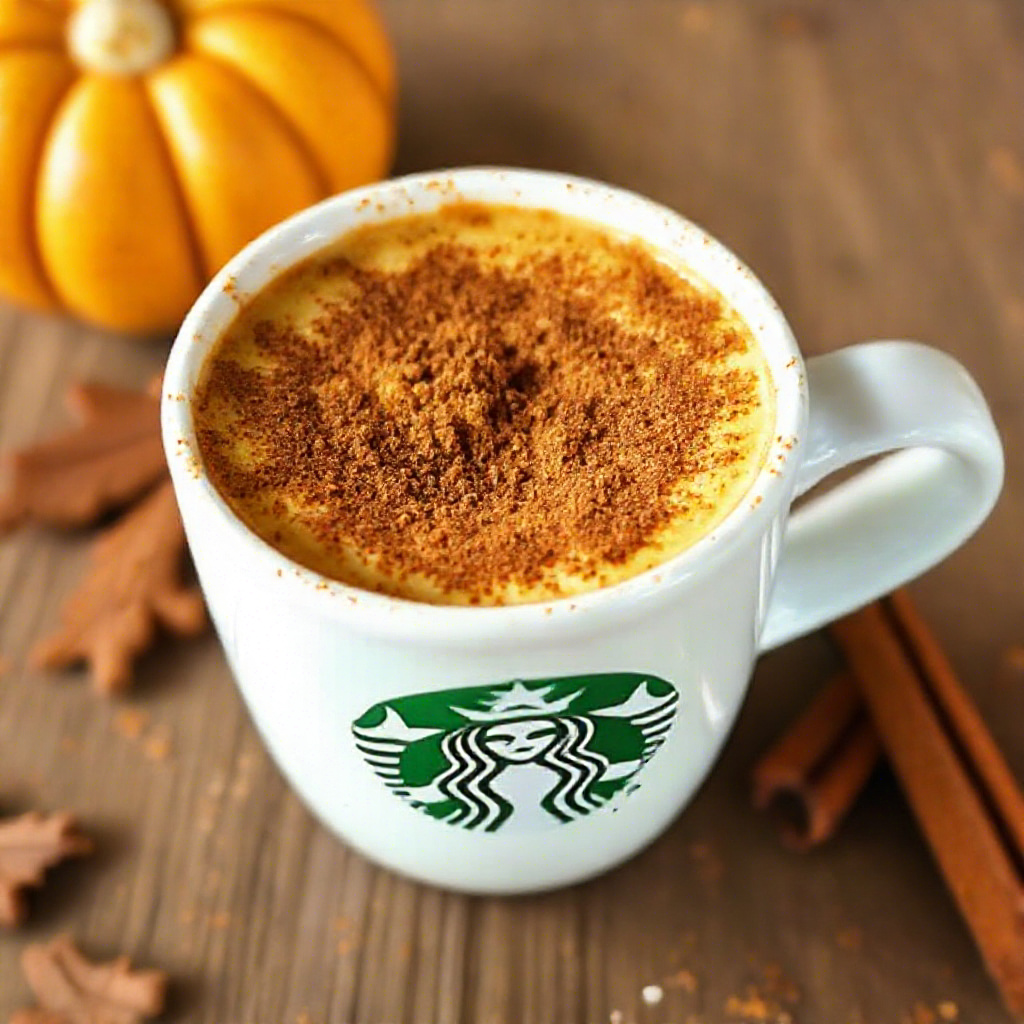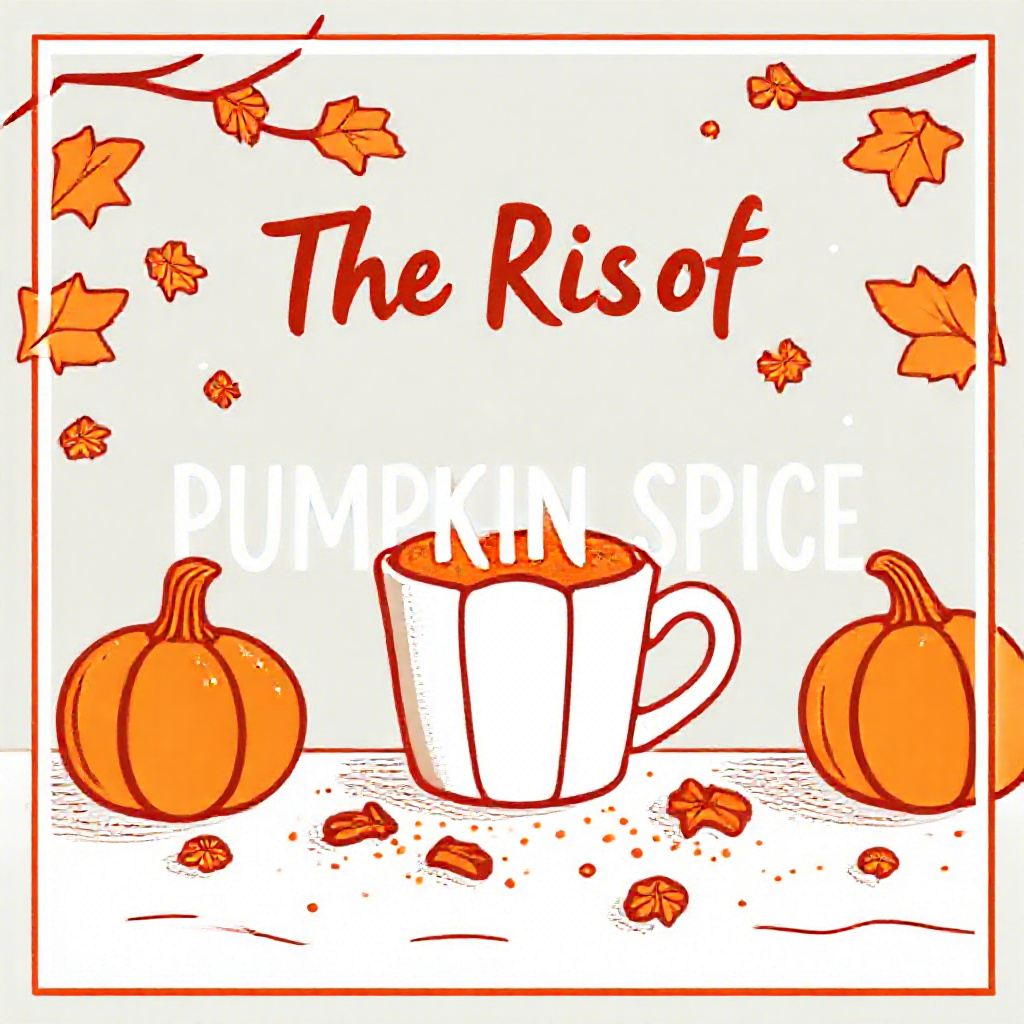Introduction: The Rise of Pumpkin Spice
Pumpkin spice, a blend of cinnamon, nutmeg, ginger, and cloves, has become synonymous with the fall season, particularly in the United States and Canada. While this spice mix has been used for centuries in baking, it wasn’t until the 2000s that it gained mainstream attention with the introduction of the Pumpkin Spice Latte (PSL) by Starbucks in 2003. Since then, pumpkin spice has transformed from a seasonal coffee flavor into a cultural phenomenon, infiltrating food, beverages, cosmetics, and even household products and the Pumpkin Spice Craze: An Iconic Flavor of Fall.
1. History of Pumpkin Spice
The Advent of the Pumpkin Spice Latte (PSL): The creation and launch of Starbucks’ PSL and its role in sparking the pumpkin spice craze globally.
Origins of the Spice Blend: A detailed history of the individual spices (cinnamon, nutmeg, ginger, and cloves), their origins, and how they came together in Western culinary traditions.
Pumpkin Pie Tradition: How pumpkin pie became a staple in North American Thanksgiving celebrations, and the role of pumpkin spice in its preparation.
2. Cultural Impact of Pumpkin Spice
Social Media and Memes: How pumpkin spice has become a cultural meme, especially on platforms like Instagram and Twitter. Its association with the “basic” stereotype and how that has both helped and hindered its popularity. Influence on Food and Beverage Trends: How the popularity of pumpkin spice has inspired other seasonal flavor trends, such as peppermint during the holiday season and salted caramel in the winter. Global Reach: Though pumpkin spice is most popular in the U.S., it has been introduced in other parts of the world. Discussion on how other countries are responding to this trend.
3. Economics of Pumpkin Spice
The Pumpkin Spice Bubble: Discussing whether the trend is sustainable or if it’s just a seasonal fad that will eventually fade.
Market Growth and Sales Statistics: Insights into the economic impact of pumpkin spice-flavored products. Statistics on the sales of pumpkin spice-flavored items, focusing on key years and major brands.
Diversification of Pumpkin Spice Products: From candles to skincare, a look at how pumpkin spice has expanded into non-food categories and the business opportunities it presents.
4. The Science Behind the Flavor
The Health Aspect: Examining the nutritional content of pumpkin spice-flavored products. Is there any health benefit to the spices themselves, and how do they compare to the often sugary and calorie-dense products they’re featured in?
Why Do We Love Pumpkin Spice? Exploring the psychological and neurological reasons why people are drawn to the taste and smell of pumpkin spice. The role of nostalgia, association with autumn, and comfort foods.
The Role of Scent in Flavor Perception: How the aroma of pumpkin spice triggers memories and emotions that contribute to its appeal.
5. Popular Pumpkin Spice Products
Beauty and Skincare Products: The rise of pumpkin spice lotions, lip balms, and bath products, exploring the rationale behind using food flavors in cosmetics.
Starbucks PSL: A breakdown of the PSL’s journey from a seasonal drink to a staple in coffee shops every fall, and its influence on Starbucks’ brand and profits.
Food and Beverage Industry: How other brands like Dunkin’, McDonald’s, and Krispy Kreme have embraced pumpkin spice, introducing their own variations on the flavor.
Beyond Coffee: A look at pumpkin spice-flavored snacks, cereals, ice creams, and even alcoholic beverages like pumpkin spice beer.
6. Pumpkin Spice in Pop Culture
Pumpkin Spice Festivals and Events: A look at pumpkin-themed events and festivals that celebrate the flavor. Notable events like pumpkin festivals, PSL celebrations, and fall markets.
TV and Movie References: Analyzing the appearance of pumpkin spice in popular television shows, movies, and even books.
Celebrity Endorsements: How celebrities have contributed to the popularity of pumpkin spice, from social media endorsements to product collaborations.
7. The Dark Side of Pumpkin Spice
Nutritional Concerns: Many pumpkin spice products are high in sugar and calories, raising concerns about their impact on public health.
The Environmental Impact: The production of spices and pumpkins for commercial products can have significant environmental impacts. Discussing the sustainability of the supply chain and efforts to make pumpkin spice products more eco-friendly.
Criticism and Controversy: While beloved by many, pumpkin spice has also faced backlash. Discuss the stereotypes (e.g., “basic” culture) and how the trend has faced criticism for over-commercialization.
8. Pumpkin Spice: Here to Stay or Fading Fad?
Other Seasonal Competitors: Exploring whether other seasonal flavors like apple cinnamon or maple might overshadow pumpkin spice in the future.
Future Predictions: Insights from market experts on whether the pumpkin spice trend will continue to grow, plateau, or decline in the coming years.
Adapting to Consumer Preferences: How brands are evolving the pumpkin spice trend to keep it fresh, such as creating healthier or more sustainable products.
9. How to Make Your Own Pumpkin Spice Products
Customization Tips: How to adjust pumpkin spice recipes to suit different taste preferences, from spicy to sweet to savory.
DIY Pumpkin Spice Recipes: Sharing recipes for homemade pumpkin spice lattes, baked goods, and even DIY pumpkin spice candles or skincare products.
10. Pumpkin Spice Around the World
How Pumpkin Spice is Gaining Popularity Internationally: Exploring how the flavor has been introduced in different cultures and how it’s being adapted to local tastes.
Regional Variations: While pumpkin spice is a staple in North America, other countries have their own take on seasonal spices. A look at similar flavors in European, Asian, and Latin American cuisine.
Conclusion: The Enduring Allure of Pumpkin Spice
While some may dismiss pumpkin spice as just a trend, its lasting presence in the market and its ability to adapt to new industries suggest otherwise. Whether it remains a staple of fall or evolves into something entirely new, pumpkin spice has undoubtedly earned its place as a symbol of autumn, a flavor rooted in both tradition and modern pop culture.




